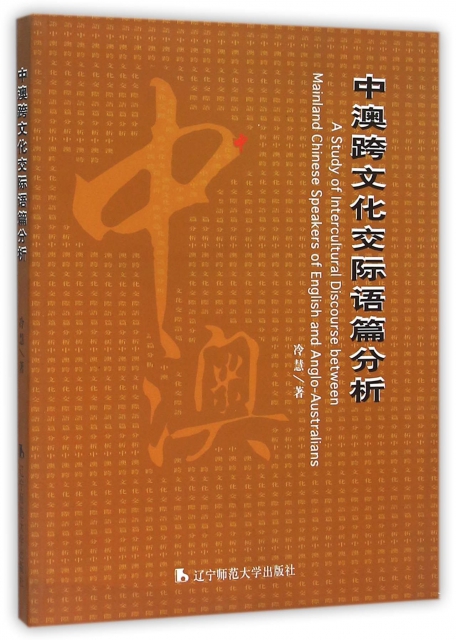| | | | 中澳跨文化交際語篇分析 | | 該商品所屬分類:文化 -> 文化事業 | | 【市場價】 | 396-576元 | | 【優惠價】 | 248-360元 | | 【介質】 | book | | 【ISBN】 | 9787811036893 | | 【折扣說明】 | 一次購物滿999元台幣免運費+贈品
一次購物滿2000元台幣95折+免運費+贈品
一次購物滿3000元台幣92折+免運費+贈品
一次購物滿4000元台幣88折+免運費+贈品
| | 【本期贈品】 | ①優質無紡布環保袋,做工棒!②品牌簽字筆 ③品牌手帕紙巾
|
|
| 版本 | 正版全新電子版PDF檔 | | 您已选择: | 正版全新 | 溫馨提示:如果有多種選項,請先選擇再點擊加入購物車。*. 電子圖書價格是0.69折,例如了得網價格是100元,電子書pdf的價格則是69元。
*. 購買電子書不支持貨到付款,購買時選擇atm或者超商、PayPal付款。付款後1-24小時內通過郵件傳輸給您。
*. 如果收到的電子書不滿意,可以聯絡我們退款。謝謝。 | | | |
| | 內容介紹 | |

-
出版社:遼寧師大
-
ISBN:9787811036893
-
作者:冷慧
-
頁數:308
-
出版日期:2007-12-01
-
印刷日期:2007-12-01
-
包裝:平裝
-
開本:16開
-
版次:1
-
印次:1
-
字數:480千字
-
冷慧著的《中澳跨文化交際語篇分析》的啟示是:(一)在跨文化交際過程中,要解決由於文化背景不同而帶來的誤解、偏見,交流雙方需要分析、了解不同文化背景背後的不同文化圖式,找出其思維的認知基礎。隻有彼此深入理解和賞識對方的文化圖式,交流雙方纔能真正進行協商,達成共識,纔能*終進行順暢的跨文化交際。(二)培養中國的雙語人纔,不僅要培養學生兩種語言的使用能力或交際能力,*重要的是培養其跨文化交際能力。跨文化交際能力培養的基礎在於使中國學生首先了解中國語言和中國文化的認知源泉.在學習西方語言和西方文化的同時.能對兩種語言和兩種文化進行認知圖式層面上的對比、分析。真正的雙語人纔不僅對語言差異有敏銳的直覺,還要對文化差異有理性的分析,並能與對方在認知圖式的深度上進行溝通,從而達到消除誤會、暢所欲言的交際佳境。
-
前言
Preface (Gary B. Palmer)
Preface (Ian Malcolm)
Preface (Stephen Keith)
CHAPTER ONE
Introduction to the Study
1.1 Background of the study
1.2 Rationale of the study: Intercultural communication between mainland Chinese speakers
of English and Anglo-Australians
1.3 Objectives and research questions of the study
1.4 Significance of the study
1.50rganisation of the chapters
CHAPTER TWO
Review of the Literature: Major Approaches Influencing Studying Chinese Ways of
Communication in Intercultural Situations
2.1 Introduction to the chapter :
2.2 Background of intercultural communication study
2.3 Interactional sociolingnistic approach to intercultural discourse analysis
2.3.1 Contextual presuppositions
2.3.2 Situated inferences
2.3.3 Contextualisation cues
2.3.4 Research method of interactional sociolingnistics
2.3.5 Applying the interactional sociolinguistic approach to the Chinese context
2.4 Cross-cultural speech-act approach
2.5 Cultural scripts: Natural semantic metalangnage
2.6 A discourse approach
2.7 Discussion: Relevance of the four approaches to the present study
CHAPTER THREE
Theoretical Framework for the Study
3.1 Introduction to the chapter
3.2 Theories of schemas and cultural schemas
3.2.1 Genesis of schema theories
3.2.2 Schemas in cognitive psychology and computer science
3.2.3 Schemas in cognitive anthropology
3.2.4 Schemas in cognitive linguistics
3.2.5 Schemas in cultural linguistics
3.3 Imagery
3.4 World view
3.5 Discourse scenarios in cultural linguistics
3.5.1 Comparing discourse scenarios and other related concepts
3.5.2 The application of discourse scenarios
3.6 Discourse indexicals in cultural linguistics
3.7 Proposition-schemas
3.8 Summary
CHAPTER FOUR
Research Design and Methodology
4.1 Introduction to the chapter
4.2 Research traditions of ethnography of communication, sociolinguistics and
finguistic anthropology
4.3 Research traditions of EOC and the present study
4.4 Identifying cultural schemas in cognitive anthropology
4.4.1 Identifying an American folk model of mind
4.4.2 Identifying American problem-solving models
4.4.3 Identifying American explanatory systems
4.4.4 Identifying American models of marriage
4.4.5 Identifying Ecuadorian cultural models of illness
4.5 Identifying cultural schemas in cultural linguistics
4.5.1 Identifying Australian Aboriginal cultural schemas through
systematic etic-emic investigations
4.5.2 Identifying Australian Aboriginal cultural schemas through
word association-interpretation
4.5.3 Identifying agency schemas in Tagalog
4.6 Methods and procedures for identifying and analysing Chinese cultural schemas
4.7 Pilot studies
4.8 Selection of participants
4.9 Data collection
4.10 Coding system
4.11 Summary
CHAPTER FIVE
Data Analysis (1): Chinese Cultural Schema of Harmony
5.1 Introduction to the chapter
5.2 Emergence of the Chinese cultural schema of Harmony
5.2.1 Chinese world view of tianren heyi 'Unity of Heaven and Mankind' and he ' harmony'
5.2.2 Yin-yang balance and he 'harmony'
5.2.3 Daoism and he 'harmony'
5.2.4 Confucianism and he 'harmony'
5.2.5 Chinese Buddhism Chart Sect (禪宗'Zen' and he 'harmony')
5.3 Instantiations of the Harmony schema in the Chinese language
5.4 Data analysis
5.5 Summary and discussion
CHAPTER SIX
Data Analysis (2): Chinese Cultural Schema of Family
6.1 Introduction to the chapter
6.2 Emergence of the Chinese cultural schema of Family
6.2.1 Chinese agriculture and the Family schema
6.2.2 The Chinese tradition of joint families and the Family schema
6.2.3 Confucianism and the Family schema
6.3 Instantiations of the Family schema in Chinese language
6.3.1 Folk art, literature and Family schema instantiations
6.3.2 Chinese phrases, idioms, common sayings and Family schema instantiations
6.3.3 Terms of address and Family schema instantiations
6.3.4 Greeting expressions and Family schema instantiations
6.3.5 Chinese discourse and Family schema instantiations
6.4 Data analysis
6.5 Summary and discussion
CHAPTER SEVEN
Data Analysis (3): Chinese Cultural Schema of Education
7.1 Introduction to the chapter
7.2 Emergence of the Chinese cultural schema of Education
7.2.1 Traditional Chinese education and the Education schema
7.2.2 Teacher roles, status and the Education schema
7.2.3 Examinations and the Education schema
7.3 Instantiations of the Education schema in Chinese language
7.4 Data analysis
7.5 Summary and discussion
CHAPTER EIGHT
Concluding Discussion, Limitations and Implications
8.1 Introduction to the chapter
8.2 A fundamental feature of Chinese discourse scenarios
8.3 Relationships between the three identified Chinese cultural schemas
8.4 Limitations
8.5 Implications for intercultural communication between mainland Chinese speakers of
English and Anglo-Australians
8.6 Implications for English teaching as a foreign language in mainland China and as a
second language in Australia
8.7 Suggestions for further research
8.8 Conclusion
References
Appendix Ⅰ: Glossary of Chinese Discourse Scenarios
Appendix Ⅱ: A List of Excerpts and Discourse Scenarios
Acknowledgements
| | |
| | | | |
|




